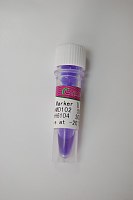Circular Dichroism for the Analysis of Protein-DNA Interactions
互联网
499
The asymmetric carbon atoms present in the sugars of nucleotides and in all the amino acids (with the exception of glycine) results in nucleic acids and proteins displaying optical activity. Further contributions to the optical activity of the polymers result from their ability to form well-defined secondary structures, in particular helices, which themselves possess asymmetry. As a consequence, circular dichroism (CD) has found widespread use in secondary structure prediction of proteins (1 ). Similar studies, though less widespread, have sought to correlate structural parameters of DNA with their CD spectrum (2 ). It follows that the disruption of secondary structure by, for example, denaturation or ligand binding can be usefully followed by circular dichroism.







